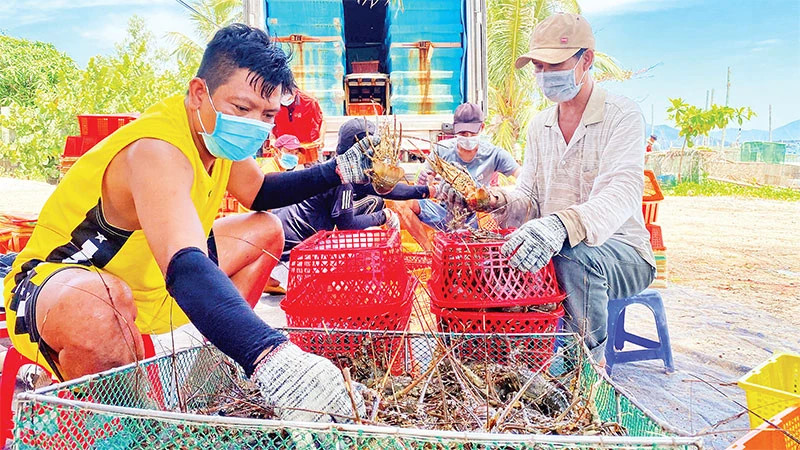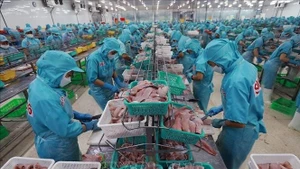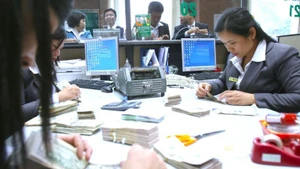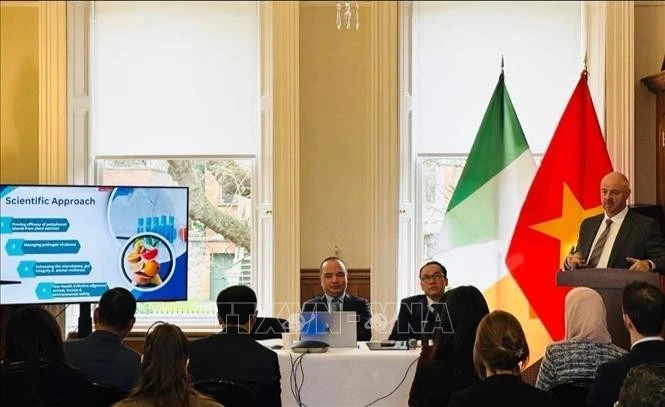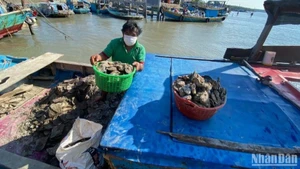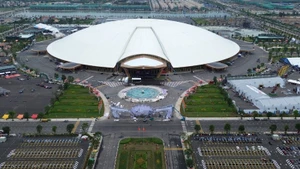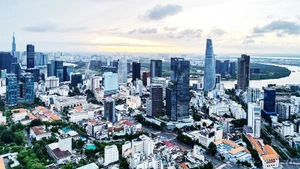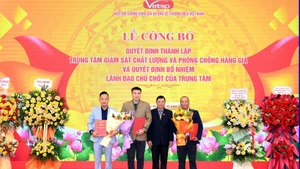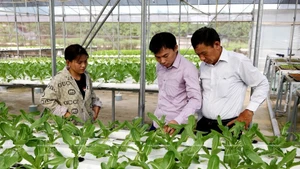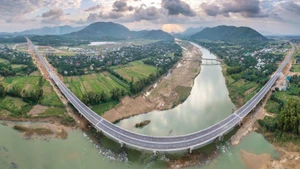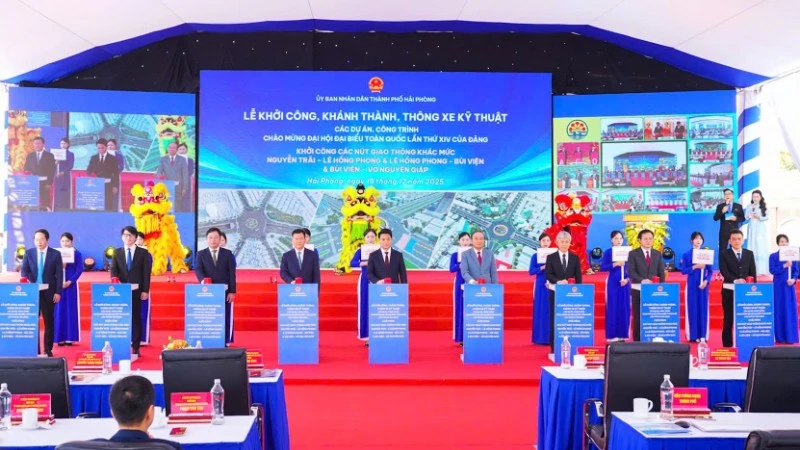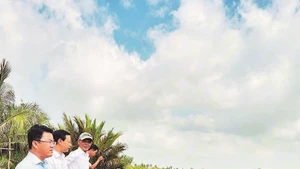Notably, lobster farmers constantly struggle with natural disasters, diseases, polluted farming environments, and reliance on small-scale exports. Coastal provinces in central Vietnam are implementing various solutions to ensure the sustainable development of lobster farming.
High economic efficiency
In 2024, Vietnam had approximately 280,500 lobster farming cages, producing over 5,870 tonnes with an estimated export value of 430 million USD. Phu Yen and Khanh Hoa provinces accounted for over 95% of the country’s farming cages and production. In Phu Yen alone, nearly 177,000 cages were in operation in 2024, yielding approximately 2,260 tonnes of lobster, valued at around 1.8 trillion VND, making it the leading province in Vietnam.
Returning to the coastal villages of Song Cau—often referred to as the “lobster capital”—the rapid wealth accumulation of lobster farmers is evident after each harvest season. According to Phan Tran Van Huy, Chairman of the Song Cau Town People’s Committee, the town currently has about 4,000 households and 10,000 workers engaged in aquaculture, primarily cage-farming lobsters. In 2024, Song Cau had about 129,320 lobster cages, producing over 2,190 tonnes, with a production value reaching approximately 1.55 billion VND per ha per year.
Xuan Phuong Commune is the leading locality in both the number of cages and production, with 1,259 households operating 70,766 lobster cages. In 2024 alone, farmers sold lobsters from 28,650 cages, yielding 1,115 tonnes, with an average price of 750,000–850,000 VND per kg. The commune generated approximately 920 billion VND in revenue.
According to Pham Ngoc Hung, Chairman of Xuan Phuong Commune People’s Committee, the profitability of lobster farming has accelerated efforts to meet criteria for upgrading the commune to ward status by 2025. By the end of 2024, the commune had successfully fulfilled all 13 required criteria.
Towards sustainable lobster farming
According to the Directorate of Fisheries, lobster cage farming generates over 3.5 trillion VND annually and provides jobs for many people in various sectors, including farming and seed harvesting. However, the industry has seen numerous shortcomings, including unsustainable practices and a lack of comprehensive planning.
Even in key lobster farming provinces, detailed zoning plans are still lacking. In some areas where zoning exists, the farming density has increased beyond capacity, risking regulatory breaches, overlaps with other marine farming activities, and heightened disease outbreaks.
Seed supply is a critical issue, since farmers rely entirely on wild-caught juvenile lobsters, using methods such as netting, trapping, and diving. This results in inconsistent seed sizes and poor quality, leading to high mortality rates, weak growth, and significant financial risks for farmers due to expensive but unreliable seed stock.
Additionally, most farms operate on a small scale, with low registration rates for cage farming. Traditional wooden cages remain dominant, and offshore farming expansion is limited. Outdated farming technologies and weak linkages between farmers and seafood companies further hinder industry development.
To ensure the stable and sustainable growth of lobster farming, local governments must reassess and reorganise farming zones, enforce registration for cage aquaculture, and strengthen environmental and disease management efforts.
Furthermore, priority should be given to investments in sustainable commercial farming technologies, including offshore farming, land-based aquaculture systems, and transitioning from traditional wooden cages to climate-resilient HDPE cages. Policies should also encourage business participation in investment, value chain-based production, and market expansion.
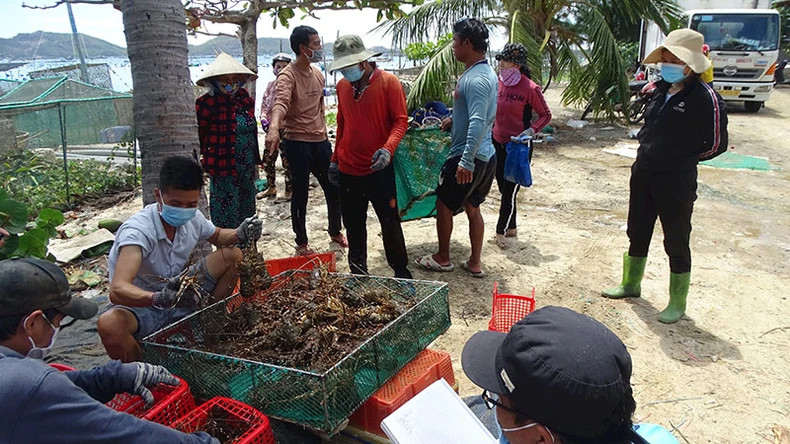 |
| Lobster harvesting in Phu Duong fishing village, Xuan Thinh, Song Cau Town. |
Song Cau Town, home to Vietnam’s largest lobster farming industry, is actively implementing sustainable farming solutions.
The locality is developing an offshore farming area spanning 1,380 ha, adopting appropriate technologies for different species, and establishing 129 self-managed community groups to oversee production, trace product origins, and protect both the environment and local security.
Additionally, Song Cau is carrying out waste collection and disposal projects from lobster cages, investing in coastal infrastructure to support aquaculture, adopting advanced technologies, and promoting offshore farming. The town is also working on converting traditional cages to climate-resilient models.
“We are also proposing policies to support residents affected by cage removal and relocation, ensuring social welfare and stable employment after restructuring,” said Phan Tran Van Huy, Chairman of the Song Cau Town People’s Committee.
According to Trinh Quang Tu, Director of the Fisheries Development Consulting and Planning Centre (Institute of Fisheries Economics and Planning), the centre has successfully established two value chain-linked production and consumption models for sustainable lobster farming. In Phu Yen, the centre has implemented a green lobster farming and distribution chain in Song Cau.
This chain links the Song Cau Lobster Cooperative with Linh Phat Seafood Trading & Service Co., Ltd. and Thanh Nga Co., Ltd., ensuring high-quality lobster seed supply and organised export markets.
The Song Cau Lobster Cooperative currently has 35 members, including one enterprise, operating about 2,300 green lobster cages with an annual yield of approximately 100 tonnes. The cooperative has received training in business management, production planning, product traceability, and market development.
Additionally, the centre has introduced disease prevention and treatment solutions, live lobster preservation techniques, brand-building strategies, and trade promotion activities to expand market access.
“After over a year of implementing the green lobster farming and consumption chain in Song Cau, many challenges remain. Issues such as detailed zoning, water surface allocation, cage restructuring, and aquaculture registration have not been fully addressed. The shortage of quality lobster seed and the limited application of advanced technologies continue to hinder progress. These issues need to be resolved soon,” Trinh Quang Tu noted.
